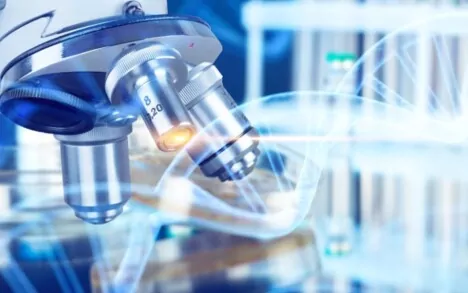Patrick Nieuwenhuizen summarizes the key take aways from the event
The Pharmaceutical world, in particular those involved with the manufacture of sterile products, is anxiously looking out for the publication of the final approved revision of EudraLex Annex 1 “Manufacture of Sterile Products”. The latest information received is that this is expected during the Summer – which could be somewhere between June and September. Organisations have to prepare themselves based on the text of Draft Revision 12 that was published in February 2020.
In support of preparation, PDA organized a number of workshops using the publicized Revision 12 as a reference point. The 2022 PDA Annex 1 Workshop held on 16 & 17 May in Dublin was the second of a series of four and the first one on European soil. The Workshop was characterized by a mix of presentations based on specific Draft Annex 1 topics combined with interactive workshops whereby the participants had the opportunity to ask the Panel of Experts about the presented subject but, above all, delegates had the opportunity to discuss their interpretation, challenges and possible solutions with peers from the industry. Based on the feedback received, the event was a great success.
From these discussions the following 6 Key Takeaways could be distilled.
Implementation period
In the run up to the final publication there is already much debate about the allowed implementation period. The Industry requested an implementation period of 12 months for standard topics, with an extended implementation period up to 36 months for more complex matters that would require facility or process updates.
It was re-emphasized by (ex) regulatory representation that the Draft Annex 1 is based on what regulators already have seen in the industry as a practice and is, in essence, not new. The new Revision puts more emphasis on these practices and it is now important for the industry to formalize these practices in a presentable format. As such, during a 2021 discussion meeting between EU member states, a standard implementation period of 6 months was proposed and a 24-month period for more sophisticated and intricate changes such as automated loading / unloading systems for lyophilization or implementation of PUPSIT.
As the Draft Text is already out for discussion and consultation for quite some time, organisations know what is coming. Where a company believes it will not be fully compliant within the timeframes agreed, a GAP analysis with a clear and realistic remediation program is expected to be in place and demonstrated adherence to the plan will be key.
Pre-Use Post Sterilisation Integrity Testing (PUPSIT)
A robustly discussed topic concerning the benefit, or more, the risks related to the expected implementation of PUPSIT. It is expected that it will remain the norm in the EU and outside. According to the regulators, PUPSIT will increase the level of aseptic assurance of the final product, and, consequently, patient safety. In addition to the aforementioned reasoning, it also makes sense from a business perspective according to the same regulators, as it prevents the rejection of products as a result of failing filter. There can be situations where PUPSIT can be omitted, but these have to be rigorously scientifically justified with supporting data. The use of pre-assembled and pre-sterilised Single Use Systems is not deemed a reason in itself and PUPSIT will still be an expectation in these scenarios
The PDA performed masking test studies and published a Points to Consider for implementation of PUPSIT.
Quality Risk Management (QRM)
It is made clear from the Scope of the Draft Annex 1 that QRM applies to the document in its entirety and not only to specific paragraphs. QRM is to be used pro-actively based on a scientific approach, whereby data are expected to be seen to support QRM.
Risk Experts often work with an extremely in-depth Risk Assessment tool which is not necessarily always required. Select the most appropriate tool based on system knowledge, how complex it is and the criticality of the system. Risk Assessments are about having meaningful assessments that are data driven and scientifically sound, not about the number of Risk Assessments completed to come to a justification. A common pitfall is when the endpoint of a Risk Assessment is predetermined and people involved work their way to this assumed or desired endpoint. Good Risk Management requires an experienced Risk Facilitator guiding the process with a multi-disciplinary team. For small organisations this can be a challenge.
Contamination Control Strategy (CCS)
Although not entirely new within the regulations, the Draft Annex 1 makes it clear that organisations are expected to have a Contamination Control Strategy (CCS) implemented across the facility defining all critical control points present with an assessment of their effectiveness. The CCS should evaluate the end-to-end process in a holistic manner to prevent contamination and is risk-based. Hence CCS and QRM go hand-in-hand. Often companies have scattered disjointed information that does not consider both CCS and QRM holistically. The CCS brings all this information together with pointers to the relevant documents for the details. The general consensus is that the CCS should be a roadmap-like document and not a tick box exercise. It must drive continuous improvement and; therefore, requires periodic re-evaluation. The Draft Annex 1 summarizes 16 elements to consider at a minimum as part of the CCS and it requires a multidisciplinary team with in-depth technical knowledge. The ownership of the CCS is a point of debate and the availability of resources and getting a team together to create the Risk Assessment and CCS is often seen as the most difficult task.
The PDA will publish a Technical Report for development of a CCS in pharmaceutical manufacturing shortly which will provide guidance as to how to establish such a CCS in an effective manner.
Direct & Indirect Product Contact Surfaces / HPV Decontamination
The Draft Annex 1 clearly describes that direct and indirect contact parts are expected to be sterilized. For existing configurations this can be a challenge as parts such as stopper bowls and tracks can be difficult to remove from their setting, sterilize and then reassemble. In some situations the size of equipment prevents removal from the enclosure or can poses a Health & Safety risk. Another consideration is how the sterilized parts are handled after sterilization and reassembly as it is of paramount importance that the equipment is not compromised during transport and installation.
The selected method of sterilization is an important factor to account for. EU Regulators do not view Hydrogen Peroxide Vapour (HPV) as a sterilization process, although the target is 6-log reduction of a highly resistant microbial spore. There is ambiguity among regulators between the EU and US as the FDA refers to HPV sterilization and need to be aware of this. While HPV decontamination is the method of choice for isolator technology, it is not deemed suitable for sterilization of direct and indirect product contact parts.
Qualification and Training
Despite all technology available, the human factor cannot be eliminated. Personnel with the right level of skillsets and attitude are of paramount importance for a robust and reliable sterile manufacturing process. For this reason, training and qualification of personnel is one of the most critical aspects for a company but also one of the most challenging. How can knowledge transfer be measured and when does one know if training is effective? There is general agreement that there should be a greater focus on personnel qualifications whereby the “why to do” is at least as important as the how. A good Training Program is about education of personnel. It is about the investment in resources and the likelihood of success is directly related to the investment the company is willing to make to develop effective training programmes for its personnel. . Concepts like virtual training allow operators to become familiar with aseptic working environments. It gives them an opportunity to safely gain experience of working in a critical area without being directly thrown in the deep end.
Summary
Although the Draft Annex 1 was published in February 2020 and organisations were able to familiarize and prepare themselves with the new text there are still many points for discussion. The final text is expected to be published before the end of the Summer and despite regulators indicating that the final text will not deviate too much from what is currently published and guidance as given in the new Annex 1 is what they already have seen in the industry, companies still have many questions relating to the interpretation and implementation of many aspects of the new Annex. For both regulators and the industry it will be important to understand and align expectations. As such, a joint Regulator / Industry Workshop was suggested and although the idea is welcomed by both parties no concrete plans have been made.
Author
Patrick Nieuwenhuizen
Director Senior Consultant at PharmaLex








